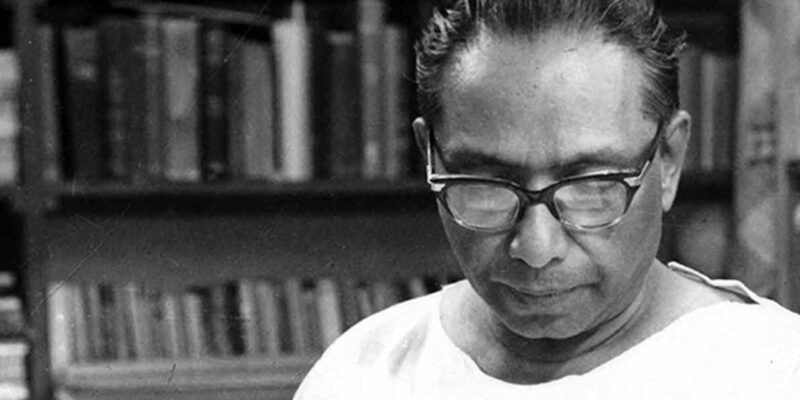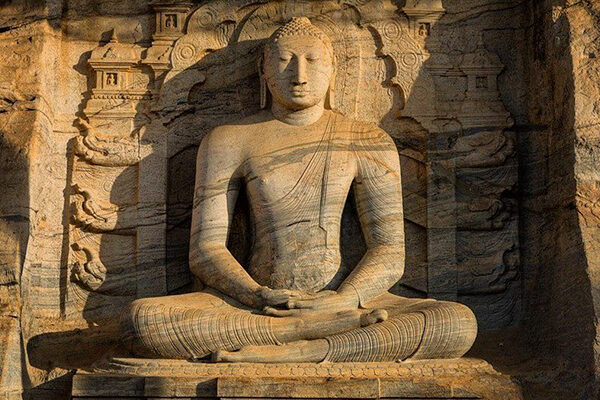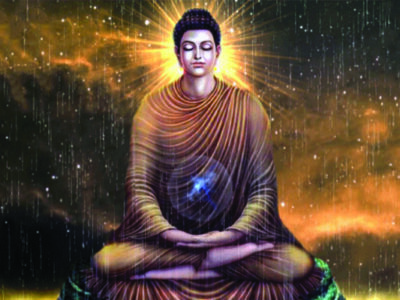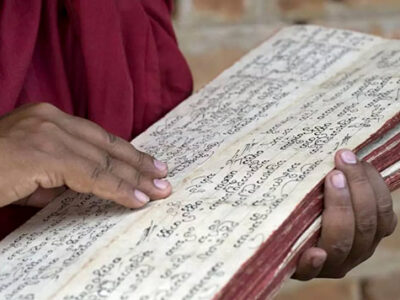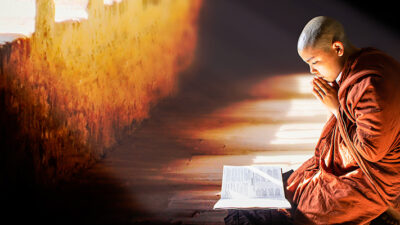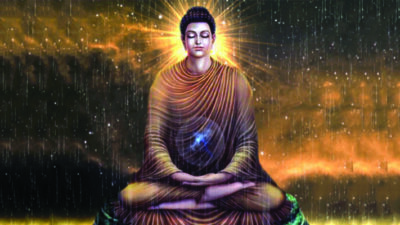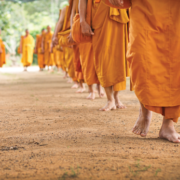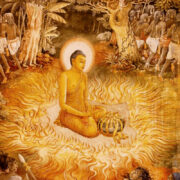Written by Prof. Dr Bikiran Prasad Barua, Bangladesh
The writer of this article is a Retired Professor of Physics from the University
of Chittagong, Bangladesh; Standing Committee Chairman (consecutive four times) of the WFB on Publication, Publicity, Education, Culture and Art; Senior Vice President of Bangladesh Bouddha Kristi Prachar Sangha, A Regional Center of the WFB in Bangladesh; Awarded with the title Vishwakirti srisaddharmagaveshi by Anagarika Dharmapala Humanitarian Foundation of Sri Lanka in 2016.
Prof. G.P.Malalasekara, a worthy son of the soil of Sri Lanka and an illuminating, illustrious leader of the Buddhist world will remain ever memorable for his outstanding contributions towards Buddhism development and Buddhists’cause in the days to come. I am extremely delighted and overwhelmed with happiness to know that 119th birth anniversary of such a great Buddhist leader of the world is going to be observed with due solemnity in Colombo, Sri Lanka at the initiative and guidance of Malalasekara Foundation on 9th November 2018. I am fortunate enough to
pay my humble heartiest respect to late Prof. Dr G.P. Malalasekara through this writing and convey my grateful thanks to the organizer for making events to show respect to Dr Malalasekara. Dr Malalasekar is such a Buddhist personality who should be remembered not only by the Sri Lankan people but also by the Buddhist people of the world for his praiseworthy great contributions for the cause of Buddhists and Buddhism. I am also happy to know from the letter of my friend Mr Ratnasiri Mutukumara that a special commemorative lecture will be delivered by the foreign scholar in the anniversary celebration depicting the life and contributions of Prof. Dr Malalasekara.
Prof. Malalasekara was a proud son of Sri Lanka. Sri Lanka is a Buddhist country. Sri Lanka is in many way pioneers in propagation, protecting, preserving and consolidating Buddhism in this world. The fourth Sangha Council (Sangiti) was held in Sri Lanka in the first century B.C. when Buddhist holy Tripitaka was first written in the history of Buddhism. That Sangiti was held in famous Aloka Vihara (alias Alu Vihara) during the time of King Vattagamini. So Sri Lanka is a pioneer in preserving Buddha’s teachings in written after Buddha’s oral transmission of His Dhamma for forty-five years. Since then Sri Lanka has produced many talented scholars, philosophers, renowned Buddhist monks, social thinkers, organizers, writers who have kept great contributions for the sake of Buddhism within Sri Lanka and around the world.
History says that among these talented dedicated Buddhist personalities Anagarika Dharmapala sacrificed his whole life for the revival of Buddhism in India who even went up to America for the sake of Buddhism. His established Mahabodhi Society of India has kept praiseworthy contributions till today towards the development of Buddhism in India. The revival of Buddhism in India owes mostly to Anagarika Dharmapa’s noble efforts enormously.
On the other hand in the concept of establishing unity amongst the Buddhists of the world from different traditions of Buddhism such as Mahayana, Theravada and Vajrayana, and in the concept of establishment of the World Fellowship of Buddhists, the role played by Prof. Dr G.P.Malalasekara is unique and unparalleled in the history of Buddhism. Both these two personalities of the Buddhist world were the brilliant and courageous sons of Sri Lanka. As such Sri Lanka is proud of them. Not only Sri Lankan people but also the whole Buddhist world are proud of them. I myself extremely inspired when I go through their invaluable contributions towards Buddhism. One is the saviour of Buddhism in India, the other is the symbol of unity of world Buddhism.
I feel shaky that I shall do injustice if I attempt to write something on the life and activities of Prof. Dr G. P Malalasekara because at the present moment I have no such authentic documents of Prof. Malalasekara in front of me. As I am attached with the WFB of which Prof. Malalasekara was the Founder President, I have come to know him from the literature of the WFB. Through the WFB Prof. Malalasekara is our leader as I told I am attached with the organization since 1986 through Kathmandu Conference in Nepal.
Evidence in the history during the formation of the WFB was narrated to us by our great leader His Holiness Mahasanghanayaka Visuddhananda Mahathera, one of the founder members of the WFB who attended the Colombo Conference in 1950 along with his two colleagues One Ven. Bangiswar Bhikkhu, Founder General Secretary of Bangladesh Bouddha Kristi Prachar Sangha and the other member Lawyer Umesh Chandra Mutsuddy, Vice President of Bangladesh Bouddha Kristi Prachar Sangha. His holiness would tell us about the towering personality of Prof. Dr. G.P. Malalasekara while he was describing his experience of going to Sri Lanka in that world Buddhist conference. 25th May of 1950 is a historic day for the world Buddhists because on this day the WFB was formed under the leadership of Prof. Dr G. P. Malalasekara.

Prof. Dr. G.P Malalasekara was born in Panadura, Sri Lanka ( then Ceylon) in the year 1899 (2442 B.E) on 9th November. He had his primary & secondary education at St John’s College Panadura in Sri Lanka. He joined the Ananda College of Colombo and he became the acting Principal
of that college by dint of his career progress.Dr.Malalaekerawas appointed as Professor of Pali Language and Buddhism and Dean of the Oriental Study of the University of Colombo. He was the author and editor of several books, among them the English and Sinhala Dictionary, the Dictionary of Pali Proper Name and the History of Pali Literature, Extended Mahavamsa, VisuddhiMagga are worth mentioning. Prof. Dr G.P Malalasekara used to serve as the Ambassador of Sri Lanka to the Soviet Union, High Commissioner of Sri Lanka to Britain and Canada, and a permanent Representative of Sri Lanka to the United Nations.
Prof. Dr G.P Malalasekara travelled to many parts of the world delivering lectures on Buddhism and Buddhist philosophy. Soon after World War II, Prof. Dr G.P Malalasekara was invited to present a paper on Buddhism at the East-West Philosopher’s Conference held at the University of Howaii, USA. There he met Mr Sunao Miabara. It may be mentioned here that Mr Sunao Miyabara was born as American of Japanese ancestry in Hawaii, USA into a Buddhist family and brought up as a Buddhist in the Mahayana tradition.
However, regarding the meeting with Dr Malalasekara, Mr Miabara has written in a prologue of “A History of The World Fellowship of Buddhists:2493 B.E(1950) to 2533 B.E(1990)“ that “ This meeting gave us an opportunity to discuss the future of Buddhism. We were certain that the only way the Buddhists could contribute to the future peace of the world was to first organize ourselves in unity and solidify ourselves.
Unity is a strength as the saying goes. History has divided Buddhism not only were there the three main divisions of Theravada, Mahayana and Vajrayana but within each of these, there were many sects and sub-sects. It was clear that the objective should be to get all the Buddhists of the world together in order that they could make positive contributions towards international peace and amity. I can recall most vividly burning the midnight oil with Dr Malalasekara in a ramshackle wooden building called the Hale Aloha at the University of Hawaii. From these beginnings emerged the idea of a World Fellowship of Buddhists. It was simply that if in the past there had been divisions among the Buddhists, the time had now come, for the sake of humanity’s future, for us to bridge differences and cement relations with fellowship and mutual understanding.”
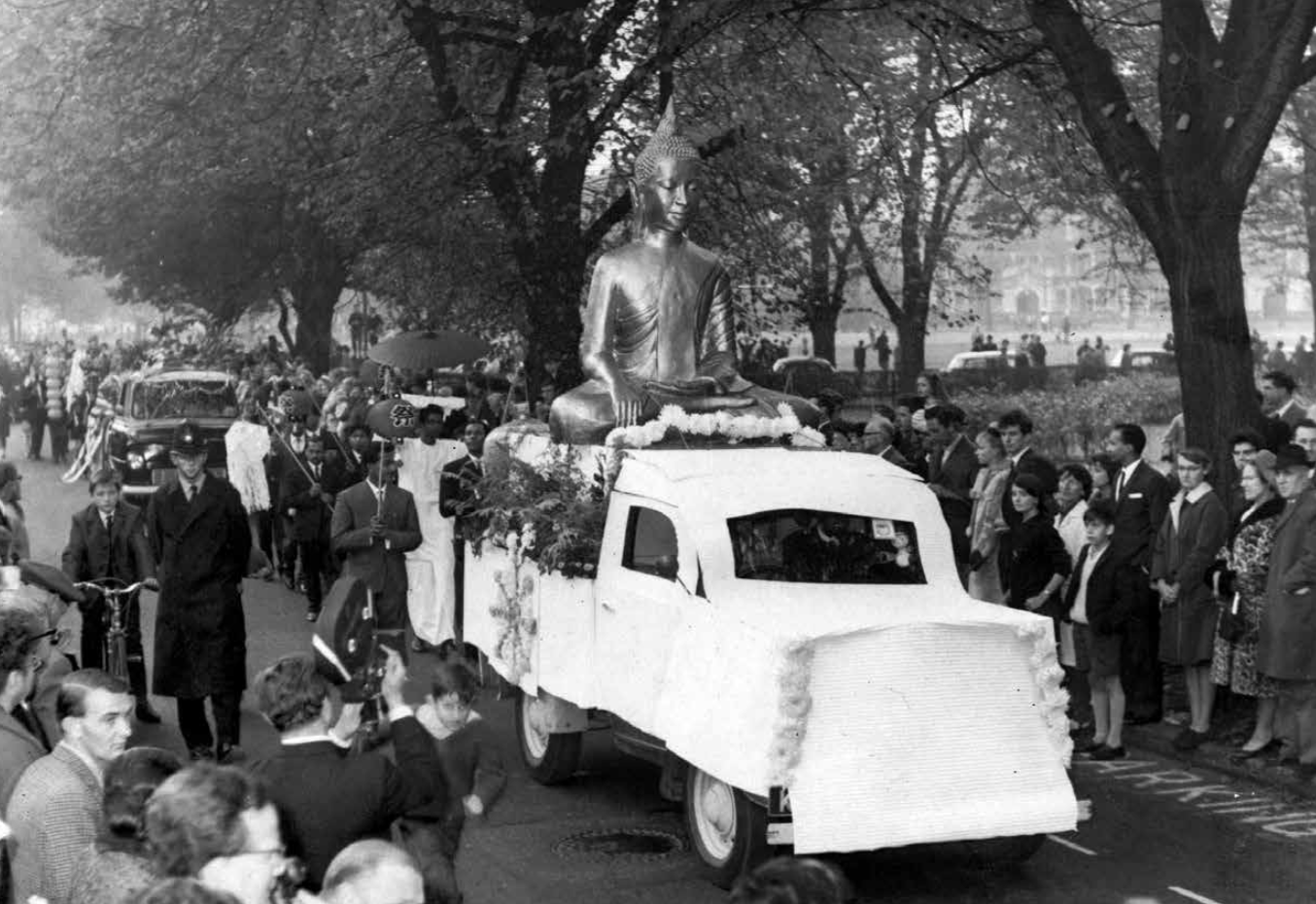
According to Mr Myabara, this has ultimately resulted in the formation of the World Fellowship Buddhists on May 25, 1950, at Sri Lanka on the full moon day of Vesak. The event was organized in Kandy, the then capital city of Ceylon where representatives of various institutions of 29 countries assembled at the invitation of Prof. Dr G. P Malalasekara.
Mr Sunao Miabara in his prologue further opined that “ The enthusiasm, the hope and expectations of the Buddhists of all denominations who came to that meeting only served to confirm the conviction of Dr Malalasekara and myself. To those of us who were fortunate to be there at the moment of founding the organization, the memory of the occasion will forever remain fresh. It was simply unforgettable because not only had the hosts made all welcome with boundless hospitality, but the participants were eager, determined and hopeful that the World Fellowship of Buddhists will be able to come before it because we had chosen the right way, the way of the Buddha.”
It was a great historic event that the Dhammacakra, the eight-spoked
wheel of Dhamma as the International Buddhist symbol and the six-coloured flag as the Buddhist flag has been adopted in this great congregation of the Buddhist world. This flag now flies at all Buddhist institutions, conferences and gatherings. All Buddhists of the world are proud of the Buddhist flag and Dhammacakra. Mr Sunao Miabara further remarked in his prologue that “
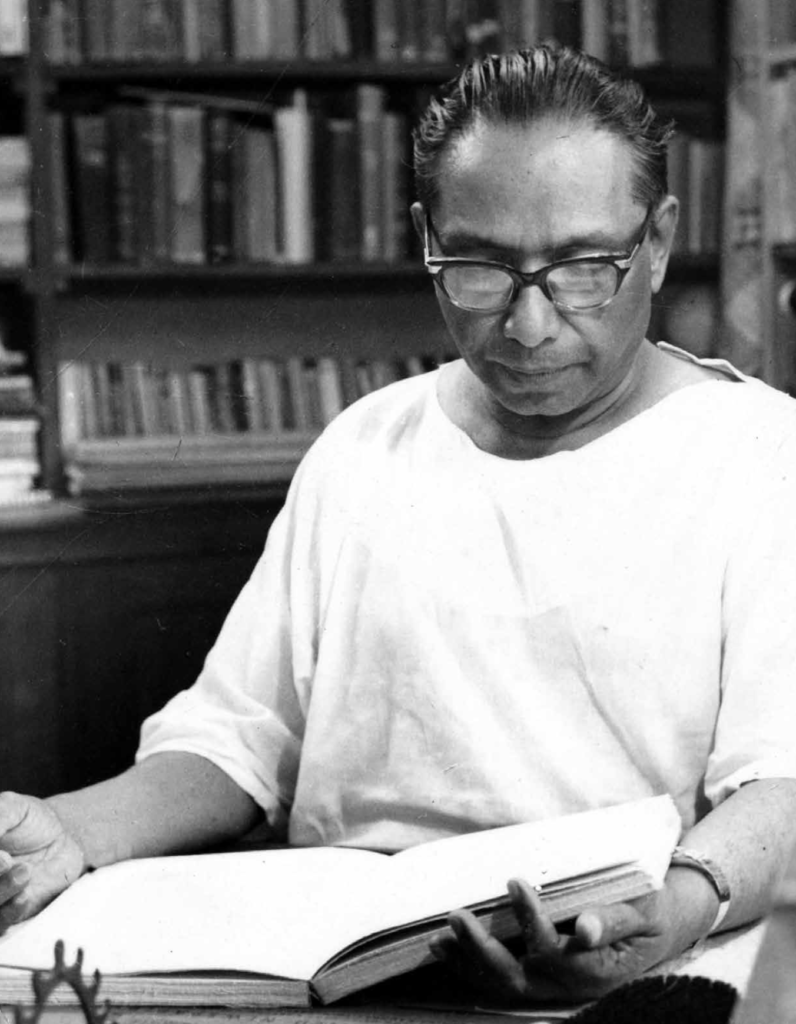
The first President was Dr G.P Malalasekara who, with a visionary’s idealism and a firebrand’s energy, was able to make a dream come true. He was not only an intellectual force but also a moral one by which he inspired the organization’s early days, its teething period. The speeches he made in those days contained the seeds for the future growth for WFB from the need to lay solid foundations such as Dhamma practice among Buddhists to the spread of Buddha’s teachings through Dhammaduta activities. Then, to grow bigger and better with progress for the uplifting of economic, social and cultural conditions of all the Buddhists in the world Dr Malalasekara served as the President of the WFB from 2493(1950) until 2501 B.E(1958).” He was then made an Honorary President until death.
From the above comment, we can realize how he was a man of energy who spent almost all his life for the cause of Dhamma. The WFB is still running. As long as the WFB will be alive DR. Malalasekara will always be alive. His long vision is at present, not a dream but it is a reality. The world Buddhism owes to him enormously. The first headquarters and the office of the Secretariat of the WFB were in Sri Lanka. Throughout his Presidency, Dr, Malalasekara played a key role in propagating Buddhism – a role which he continued to play although he was no longer the President. He travelled extensively to give lectures and he never once missed the General Meeting of the WFB until his last. He was so committed and dedicated.
Under the leadership of Prof. Dr G.P.Malalasekara, the First General Conference of the WFB was held in Colombo, Sri Lanka from 26 May to 6 June 1950. It has thus been said that “No one can deny that any movement begins with the first step and its significance cannot be overemphasized. The credit for organizing the inaugural session and the First General Conference of the WFB goes to the Buddhists of Sri Lanka under the leadership of Dr G. Malalasekara. The World Fellowship of Buddhists was inaugurated at the Dalada Maligawa, the Holy Temple of the Tooth Relic in Kandy. The Sri Lankan Organization Committee followed through its considered view that an event of world-wide importance, the creation of the WFB should be held in a place relevant to sacred association with Buddhism. So it was that on 25 May 2493 (1950), a day associated with the Buddhist Vaishak, in an edifice with renowned holiness in Buddhism, that the World Fellowship of Buddhists came into being.”
The Second General Conference of the WFB was held in Tokyo, Japan under the Presidentship of Prof. Dr G.P. Malalasekaraat the Tsukiji Hongwanji Temple from 25 to 30 September 1952 ( 2493 B.E). That was the time in Japan after a few years of World War II. It has thus been said that “ It was also the year of commemoration of the 1400th anniversary of the introduction of Buddhism into Japan. In view of WFB’s firm commitment to international peace and worldwide economic and social development as strongly expressed at the First Conference in Sri Lanka, the choice of Japan for its second conference seemed most appropriate.” This clearly indicates that the far-sighted vision of forming the WFB by Prof. Dr G.P Malalasekara has been highly appreciated by the Japanese who had the experience of the tragedy of second world war. There is no other alternative than peace in the world. The founding of the WFB thus indicated that the Buddhists need to play a key role in world peace.
The third General Conference of the WFB was held in Rangoon (now Yangoon), Union of Burma (now Myanmar) from 3 to 5 December 2497 (1954). That third General Conference of the WFB was a very important event in the history of Buddhism because in that conference the then Prime Minister of the Union of Burma declared that Sixth Buddhist Council will be convened in Burma to bring all Buddhists, whatever their persuasions, to meet and purify the doctrinal texts.” So this important event has happened during the tenure of Dr Malalasekara while he was still the President of the WFB. The fourth General Conference of the WFB was held in Kathmandu, Nepal from 25 to 27 November 2599 (1956). This was the year of Buddha Jayanti, the commemoration of the 2500th anniversary of Sakyamuni Buddha’s mahaparinirvana.
WFB President Dr Malalasekara in his statement at the opening session stated that no more propitious time could have been chosen for an event of this nature and no place could have been found more fitting than Nepal. He further made reference to a Buddhist event of historical significance which had occurred in India, the land of Buddhism’s birth.
The WFB President said, “Just one month ago, on 14th of October 1956 (2499), to be precise, we saw a miracle happen when at Nagpur 500,000 people, embraced Buddhism under the leadership of Dr B.R. Ambedkar. Never before in the history of any religion in the world had half a million people declare themselves the adherents of a new Faith on a single occasion. “Dr Ambedkar was renowned for his conversion to Buddhism, bringing with him a substantial number of his cast members.
The fifth General Conference of the WFB was held in Bangkok, Thailand from 24 to 30 November 2501 (1958) at Sala Santhitham, the Hall of Peace where United Nations Agencies were located at that time. It was eight and a half years since the WFB came into being, and its principal founder Dr Malalasekara having been the President since the Organization’s inception was to turn over that office to U Chan Htoon of Burma during this session.
From all the five conferences of the WFB, it is seen that every conference bears the testimony of great events of that country or related to the history of Buddhism or related to the WFB. Dr Malalasekara was a successful President of the WFB. Dr Malalasekara is said to be the great creator founder and leader of the WFB. He brought together all the Buddhists of the world into one organization-The WFB. He was a great scholar, University Professor, Diplomat, Representative to the UNO, Global Social Worker, Great Intellectual, Friend to Mankind and Humanitarian.
Dr Malalasekara served as the Chairman of the National Council
of Higher Education from 1966 to 1970. He was unanimously elected President of the All Ceylon Buddhist Congress in 1939 and held office on Twenty (22) occasions. As a great foremost scholar of Buddhism, his untiring efforts in the propagation of Buddhism in the world was highly recognized. His death ( on 23rd April 1973) was a great loss both to the Buddhist world and Sri Lanka.
A leader like Dr Malalasekara is the pride of the Buddhist world. They’re not so many Buddhist leaders who earnestly think for world Buddhism. Amongst those who honestly and sincerely worked for Buddhism and shoulder the responsibility of organizing the Buddhists of the world, Dr Malalasekar was
an exceptional World Buddhist leader of far-sighted vision and mission.
My humble special tribute to His Excellency Prof. Dr G.P. Malalasekara.

